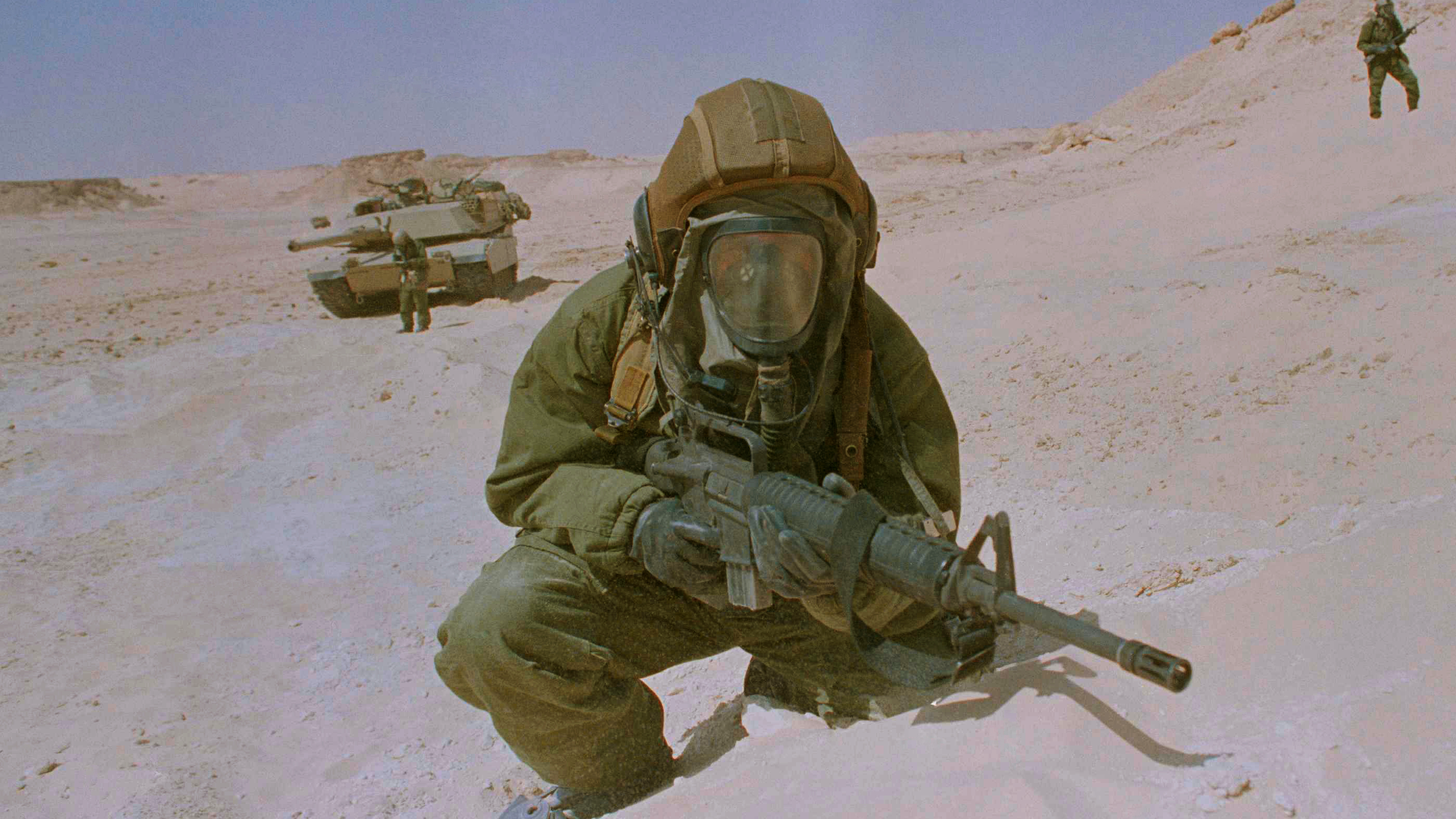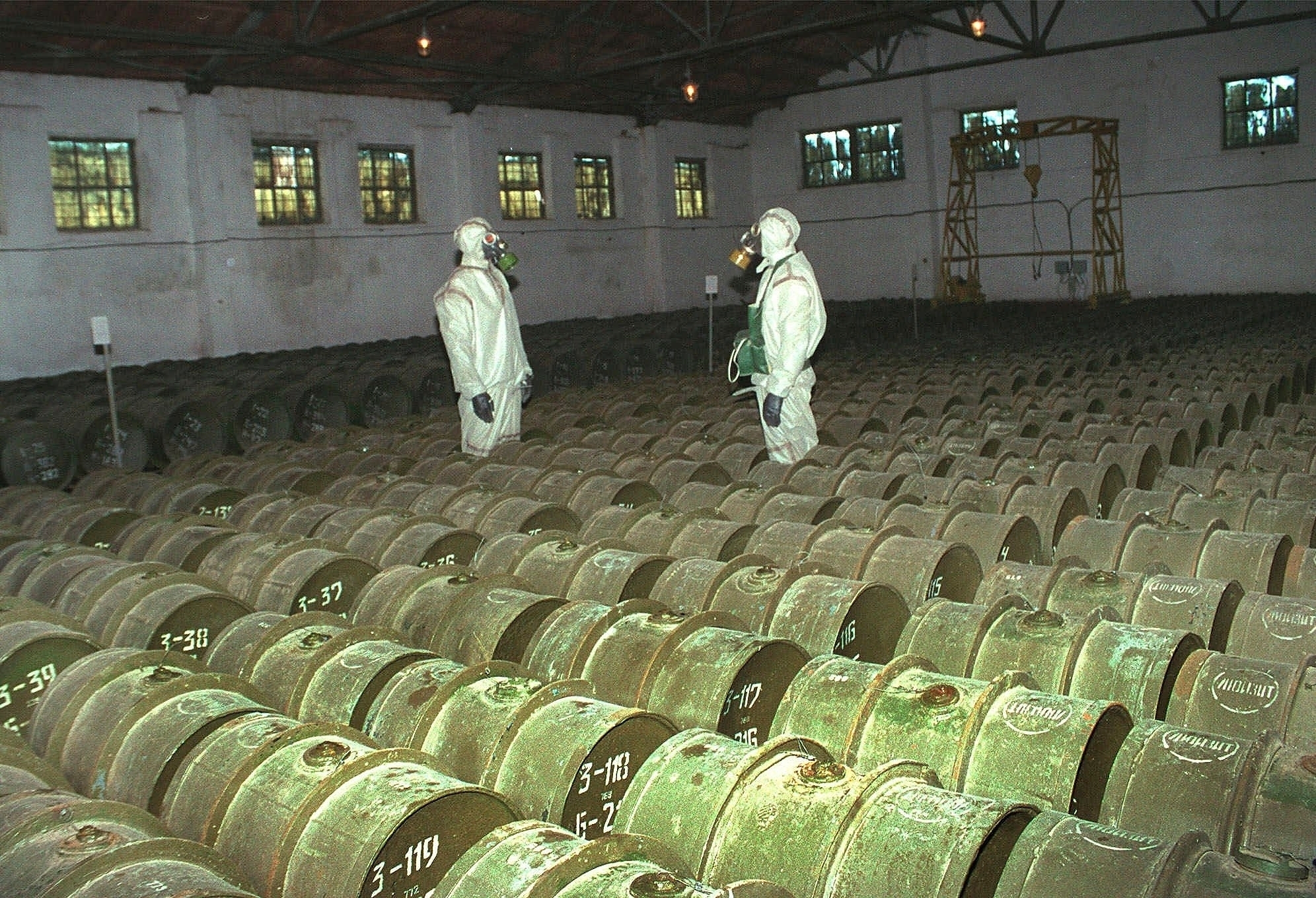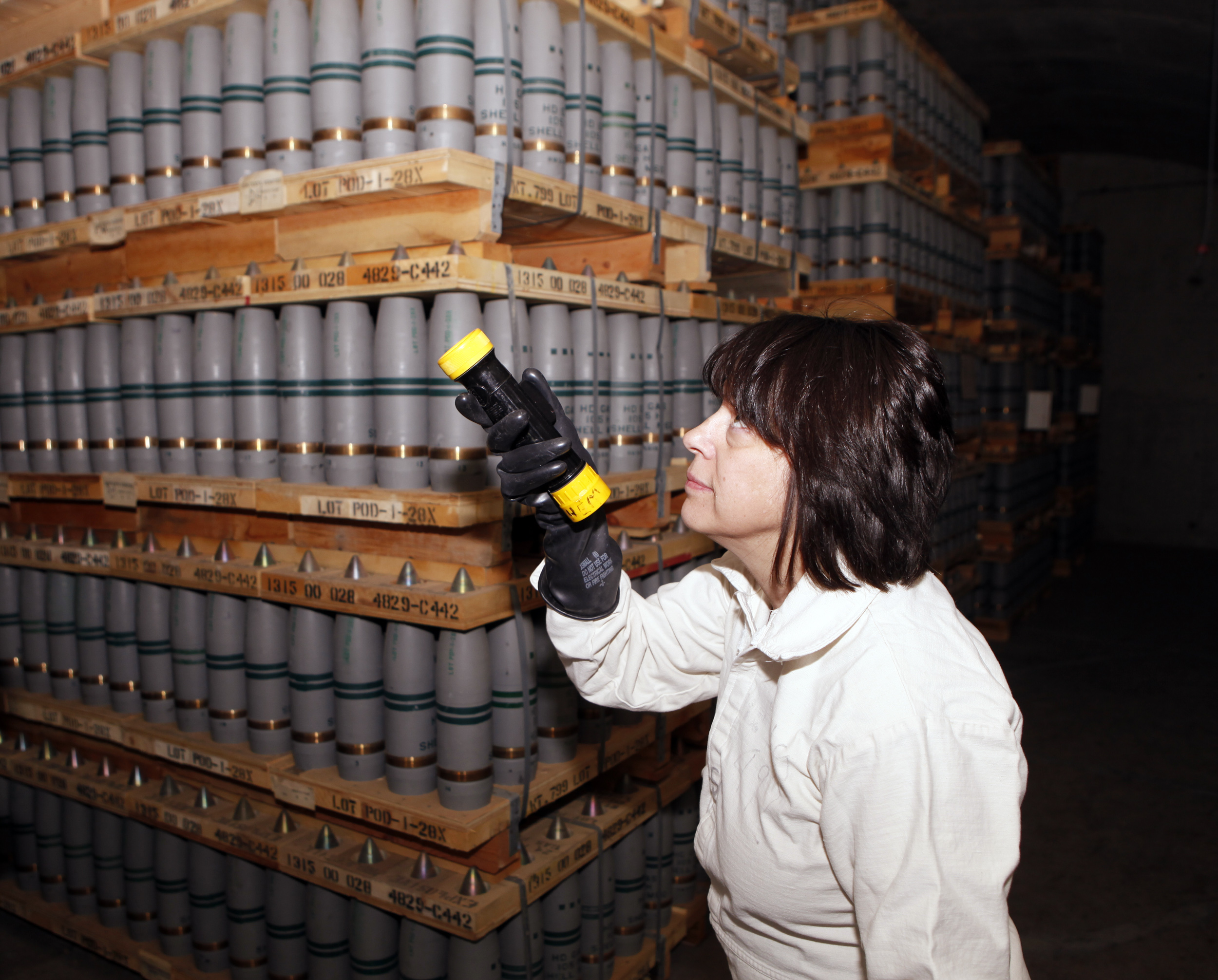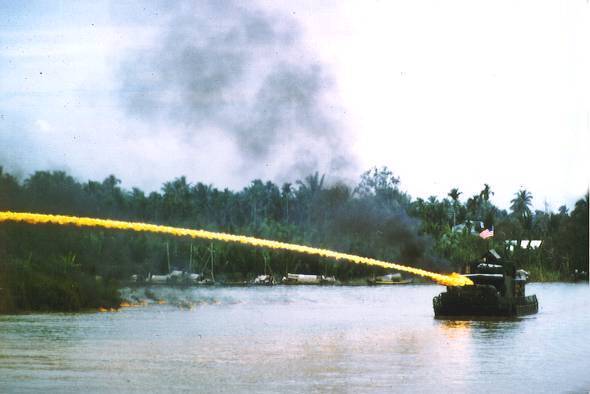
U.S. soldier wears a nuclear-biological-chemical suit in the Saudi desert on October 3, 1990 in Saudi Arabia. /David Longstreath/AP
U.S. soldier wears a nuclear-biological-chemical suit in the Saudi desert on October 3, 1990 in Saudi Arabia. /David Longstreath/AP
As fears grow over the potential use of chemical weapons in Ukraine, the definition of what does and doesn't constitute a chemical weapon and its history has never been more critical.
Ukrainian President Volodymyr Zelenskyy has expressed concern that Russia could deploy chemical weapons in the war. There has been an unconfirmed report of their use in the besieged southern port of Mariupol, which Russia has denied.
The convention
Chemical weapons production, use and stockpiling are banned under the 1997 Chemical Weapons Convention (CWC). Only Egypt, DPRK and South Sudan have not signed or ratified the international arms control treaty. Israel has signed but not ratified.
READ MORE
Floating train tipped for speed record
Telling China's story: Michael Wood
Sweden and Finland look towards NATO
The convention is overseen by the Organisation for the Prohibition of Chemical Weapons (OPCW) in The Hague. It can determine whether toxic chemicals were used as weapons and, since mid-2018, identify perpetrators in Syria.
Under the treaty, the use of the most dangerous "scheduled" toxins and their precursors is banned. This includes nerve agents sarin, VX and the Soviet-era developed Novichok, the poison ricin and the blistering agent sulphur mustard.
The OPCW says a chemical weapon is "any chemical which through its chemical action on life processes can cause death, temporary incapacitation or permanent harm" through its toxic properties. A non-controlled chemical, such as chlorine, could also become a chemical weapon if used in a conflict.
Although condemned by human rights groups, white phosphorous is not banned by the CWC. Neither are cluster munitions, which fall under a separate international treaty.

Two Russian soldiers make a routine check of metal containers with toxic agents at a chemical weapons storage site in the town of Gorny, Russia, May 20, 2000. /AP
Two Russian soldiers make a routine check of metal containers with toxic agents at a chemical weapons storage site in the town of Gorny, Russia, May 20, 2000. /AP
When have they been used?
Sulphur mustard was first deployed on a large scale during World War I in Ypres, Belgium, when around 90,000 people died due to exposure to chemical weapons.
Thousands of Kurdish people were killed, many of them women and children, in a large-scale chemical attack on Halabja in March 1988 during the Iran-Iraq war.
In 1995, a doomsday cult in Japan released sarin in the Tokyo subway, killing 13 people and making thousands ill.
After decades of little use, sarin and chlorine barrel bombs were used systematically during Syria's civil war, killing or injuring thousands. Roughly 150 cases are under investigation by the OPCW, and 20 uses have been confirmed.
Syrian forces backed by Russia and the forces of the so-called Islamic State were found to have used chemical weapons during the decade-long war.
Russia and Syria deny using chemical weapons and instead blame rebel groups and political opponents or say attacks were 'false flags' staged to implicate them.
The largest single attack in Syria was in August 2013, in the Damascus suburb of Ghouta, when hundreds were killed in a sarin gas strike widely blamed by Western governments on Syrian government forces.
States have blamed Russia at the OPCW for two attacks with the nerve agent Novichok, one against former Russian military intelligence officer Sergei Skripal and his daughter in Britain in March 2018 and another on a critic of Russian President Vladimir Putin, Alexei Navalny, in Siberia in August 2020.
In April 2021, Syria was stripped of its voting rights by member OPCW states after its forces were found to have repeatedly used poison gas during the civil war. Damascus has failed to declare several banned substances found by inspectors.
How are suspected chemical attacks investigated?
OPCW investigators seek to build an evidence-based dossier, including laboratory tests of samples collected from victims and the scene, including oil samples that they could test for traces of possible chemical weapons or other munitions.
Then investigators would seek to interview witnesses and survivors to build a picture of what they experienced and the physicians who treated them.
In past investigations, experts have studied gas dispersion models and topographic charts and looked at digital images.

A chemical operations manager uses a flashlight to inspect mustard agent shells in a U.S. bunker. /Ed Andrieski/AP
A chemical operations manager uses a flashlight to inspect mustard agent shells in a U.S. bunker. /Ed Andrieski/AP
Which weapons use chemicals but aren't banned?
• Napalm
Napalm has a gel-like consistency that allows it to stick to a target. It is primarily used with jet fuel or gasoline/petrol to produce a bomb, which can ignite easily.
It isn't banned under international law for use against military targets, but use against civilian populations was forbidden in the UN Convention on Certain Conventional Weapons (CCW) in 1980.
Napalm was initially used in World War II by Axis and Allied powers as fuel for flamethrowers. During the Korean war, the U.S. air forces, which had near-total air dominance, used napalm to support ground troops. The Americans' use of napalm was criticized by Winston Churchill, who branded the tactic "very cruel" as U.S./UN forces were "splashing it all over the civilian population."
At the same time, the French Air Force was using napalm in the First Indochina War (1946–1954). As Vietnam fought for independence, first against the French and then against the Americans, the tactic would continue. The U.S. is estimated to have dropped 388,000 tons of napalm bombs on Vietnam during the war.
• Phosphorus
Phosphorus munitions, which some experts believe could have been used in Mariupol, are not considered chemical weapons.
Most armies have phosphorus munitions to use for illuminating battlefields or targets or to produce smoke screens. However, if an army deliberately fired a phosphorus munition into an enclosed space in order to expose people to toxic fumes, it could be a breach of the Convention.

Riverboat of the U.S. Brown-water navy deploying an ignited napalm mixture from a riverboat-mounted flamethrower in Vietnam. /Wikipedia
Riverboat of the U.S. Brown-water navy deploying an ignited napalm mixture from a riverboat-mounted flamethrower in Vietnam. /Wikipedia
• Agent Orange: herbicidal warfare
Developed in the 1940s by the UK and later by the U.S., herbicidal warfare, generally relating to the use of substances designed to destroy the plant-based ecosystem, was deployed by the British during the Malayan Emergency (1948–1960).
The substances deployed against the Malayan National Liberation Army contained Trioxone, an ingredient that forms a part of the chemical composition of Agent Orange, a herbicide used by the U.S. during the Vietnam War.
While not initially deadly, they can cause humans to develop liver problems and skin disease when in contact with Agent Orange. However, long-term effects are far more damaging. Vietnam estimates as many as three million people suffered illness because of Agent Orange, many from various cancers.
Washington has challenged these figures, though it has documented leukemia, Hodgkin's lymphoma and other cancers in veterans who fought in Vietnam. An epidemiological study done by U.S. Centers for Disease Control and Prevention showed an increase in the rate of congenital disabilities in the children of military personnel as a result of Agent Orange. These disabilities have been widely noted in Vietnamese studies too.
Source(s): Reuters
,AP

